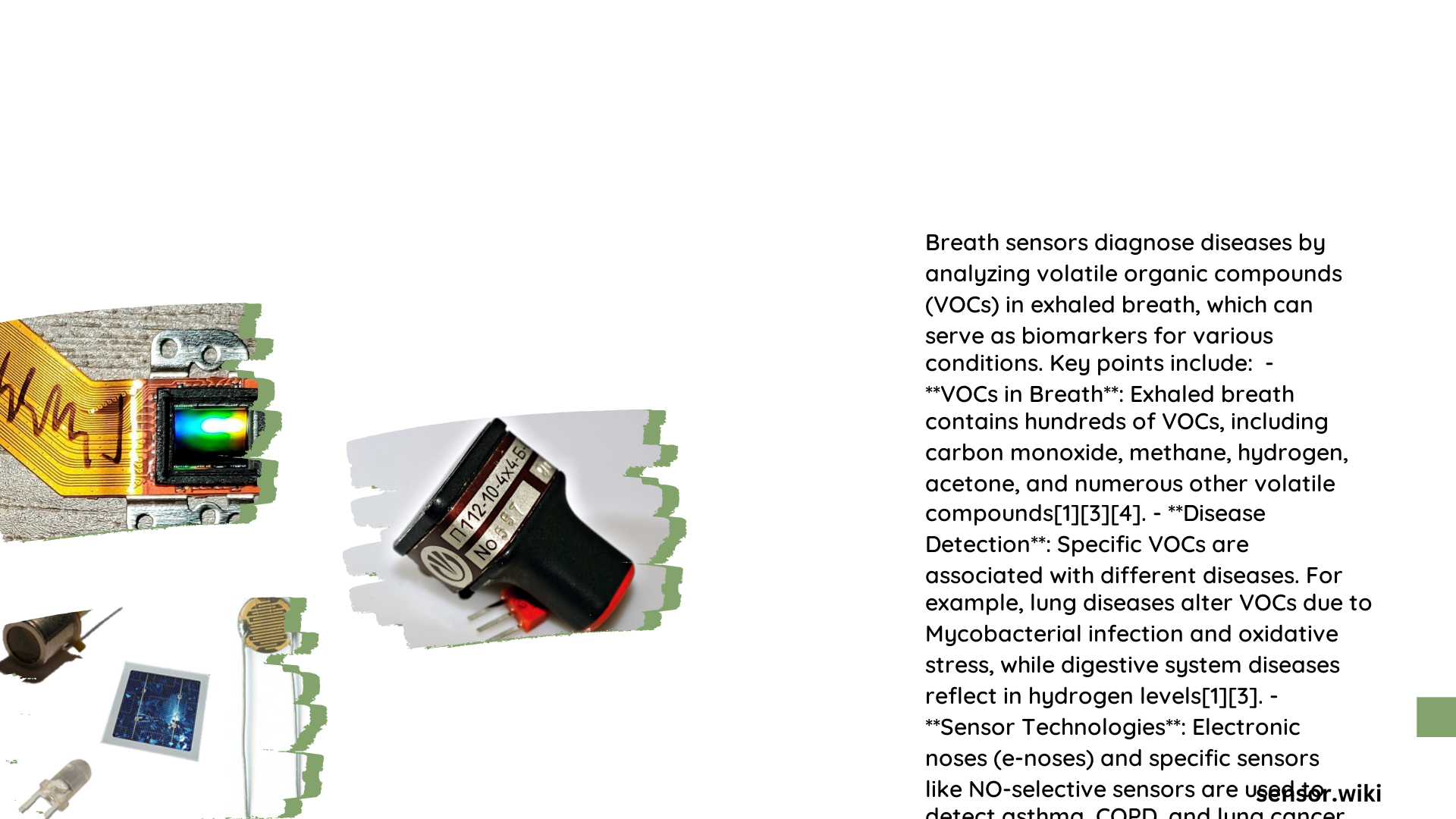Breath sensors represent a groundbreaking medical diagnostic approach that enables healthcare professionals to detect diseases through volatile organic compound (VOC) analysis in human exhalation. These sophisticated technological devices can identify molecular markers associated with various medical conditions, transforming traditional diagnostic methodologies by providing non-invasive, rapid, and potentially more accurate disease screening techniques.
What Are Breath Sensors and How Do They Work?
Breath sensors utilize advanced detection mechanisms to analyze complex molecular compositions in exhaled breath. These innovative technologies can identify specific biomarkers indicating potential health issues across multiple medical domains.
Key Technologies in Breath Sensor Diagnosis
Polymer and Carbon Black Sensor Arrays
- Detect volatile organic compounds (VOCs)
- Distinguish between different disease states
- Provide high accuracy rates (85-96%)
| Sensor Type | Disease Detection | Accuracy Rate |
|---|---|---|
| Polymer Sensors | Respiratory Conditions | 93-96% |
| Carbon Black Arrays | Multiple Disease States | 85-92% |
What Diseases Can Breath Sensors Detect?
Breath sensors demonstrate remarkable capabilities in detecting:
- Lung Diseases
- Chronic Obstructive Pulmonary Disease (COPD)
- Asthma
-
Lung Cancer
-
Metabolic Disorders
- Diabetes
-
Ketoacidosis
-
Neurological Conditions
- Early Parkinson’s markers
- Alzheimer’s potential indicators
How Accurate Are Breath Sensor Diagnostic Technologies?
Breath sensor technologies showcase impressive diagnostic precision:
- Lung Cancer Detection: 80% sensitivity and specificity
- Asthma Classification: 96% accuracy in patient group differentiation
- Metabolic Disorder Screening: Detection limits as low as 304 parts per trillion
What Challenges Exist in Breath Sensor Implementation?
Despite promising results, several challenges remain:
- High Equipment Costs
- Limited Widespread Availability
- Complex Calibration Requirements
- Need for Specialized Training
What Makes Breath Sensors Unique?
Breath sensors offer unprecedented advantages:
- Non-Invasive Testing
- Rapid Results
- Minimal Patient Discomfort
- Potential for Early Disease Detection
Future Perspectives in Breath Sensor Technology
Emerging research focuses on:
– Improving sensor sensitivity
– Developing portable diagnostic devices
– Creating comprehensive disease screening platforms
– Reducing overall diagnostic costs
Technical Specifications of Advanced Breath Sensors

Sensor Composition
- Polymer-Based Sensors
- Surface Acoustic Wave (SAW) Sensors
- Electronic Nose (E-Nose) Configurations
Detection Capabilities
- Sensitivity: <1 ppb for specific compounds
- Response Time: Milliseconds to minutes
- Molecular Recognition: Highly specific biomarker detection
Conclusion
Breath sensor technologies represent a transformative approach in medical diagnostics, offering non-invasive, precise, and potentially life-saving disease detection methodologies.
Recommendations for Healthcare Professionals
- Stay updated on emerging breath sensor technologies
- Integrate these diagnostic tools cautiously
- Validate results through comprehensive testing
- Maintain patient-centric approach
Reference:
– [1] ERS Publications
– [2] Owlstone Medical
– [3] Springer Research
– [4] Advanced Sensor Technology Journal
